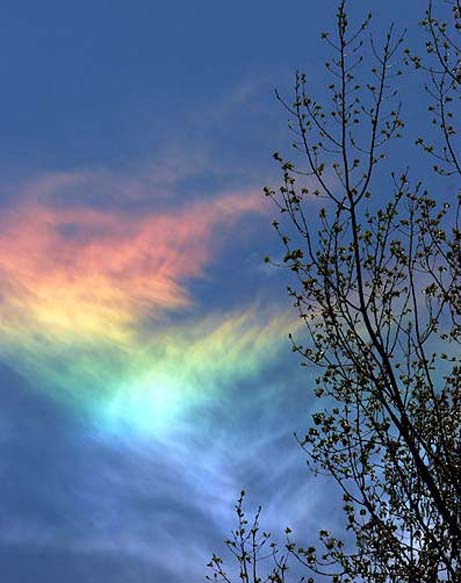
Such rainbows are more technically referred to as tertiary or quaternary rainbows. That makes it well nigh impossible to capture all four rainbows in the same picture — and because some light is lost with each bounce, the third and fourth rainbows are incredibly faint. If the sun broke through the clouds under these conditions, it could project a dim tertiary rainbow against the dark clouds nearby, they said.

Michael Grossmann / Applied Optics
A processed version of the image is at right, revealing a faint tertiary rainbow between the white arrows.

Some experts thought it'd be impossible to make out the rainbow, but amateur rainbow-chasers rose to the challenge. advertisement
I decided to use that technique to increase the chances to record the third-order rainbow. I took several image series until the rain stopped at my location. I did not see that rainbow visually.

"Back home I started processing, and already the first image series that I took when the sun brightly lit the raindrops showed the third-order rainbow! I checked the Internet for higher order bows and quickly realized that that image series likely showed the fourth-order rainbow.

Theoretically, it's possible to have a quintuple or a sextuple rainbow, but the optical geometry of the bounces within the raindrop is such that the fifth- and sixth-order rainbows would be overwhelmed by the light from the first- and the second-order rainbows. The research papers describing the observations, and providing guidance for future rainbow-chasers, appear in a special issue of Applied Optics.
Source : http://photoblog.msnbc.msn.com/_news/2011/10/05/8173218-whoa-its-a-quadruple-rainbow
